Author: Aleksandr Drobyazko, Editor: P Radley
It is a well known fact, that Russian industry in the beginning of the twentieth century strongly lagged behind the industry of Europe. Nevertheless, the development of the country showed impressive progress. Together with Russia's growth of manufacturing, Russian engineers had been developing a number of interesting projects in different areas of technology, including military ones. One interesting AFV project was offered by Russian engineer Vasiliy Mendeleyev (1886-1922). He was the son of the well known Russian scientist Dmitriy Mendeleev. Vasiliy Mendeleyev had graduated from the Kronshtadt Marine Engineering School, and worked as the engineer at a ship-building factory.
Over the course of several years (1911-1915) and without any assistance, Mendeleev worked in his own time on the AFV project. One of variants of this machine, with weight about 170 tons, was to be be armed with 120-mm gun placed in the forward part of the armored hull, and with a machine gun in the rotating turret. It carried a ammunition load of 51 shells. The thickness of the armored protection of the hull, was: front: 150 mm, sides and rear: 100 mm. Maximum speed: 24 km/hour. It was to have a crew of 8. The tank was never built.
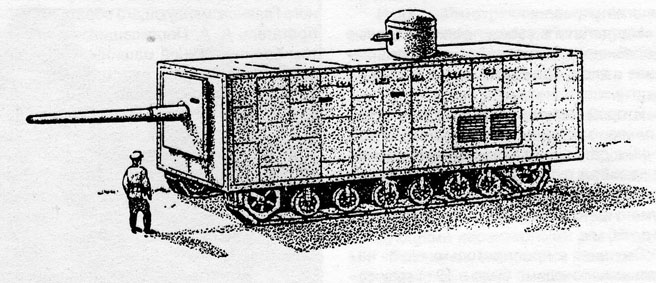
Inside the armored hull, beside the engine, gear box, gun and the internal equipment, the running gear was placed. It was to be powered by a powerful petrol engine. The petrol tanks were to be placed in the aft part of the machine, in an isolated compartment. The gear box was mechanical, with four forward gears and one for reverse. The direction of rotation of the cranked shaft of the engine could also be changed.
The tank had a special gas suspension, which not only eased the travel of the vehicle when on the move, but that also allowed for the tank to move with the hull half-lowered hull, and even completely lower the hull when stopped, if necessary. The idea of the inventor, was that the full or partial lowering of the hull would protect the most vulnerable part of the machine, the running gear, from enemy fire.
Lowering the hull to the ground also protected the running gear from the harmful effects of the powerful recoil of the gun. Movement over long distances was to be done by rail, but the AFV was supposed to have a special device that allowed it to be moved upon the rails, and even move by its own, or with the help of a locomotive. To facilitate steering of the tank, V.D.Mendeleyev suggested add apply pneumatic servo-drivers to the main friction clutch, a box of transfers and the mechanism of turn. On a case the pneumatic servo-drivers failed reserve mechanical drives were the be provided. The working of the gun was also be done with mechanical help, with increased the rate of fire. The machine-gun turret, that could be rotate 360 degrees, could also be lowered into the hull, again with the aid of a pneumatic device. A pneumatic device was also used for the adjustment and tension of the tracks.

Position for firing the gun (the hull is lowered to the ground).
All these pneumatic devices were provided with necessary quantity of compressed air with the aid of a special compressor, driven by the engine of the tank. Four operating posts were provided, which allowed any of members of crew to operate machine, in case the driver was wounded or killed or the steering apparatus provided to him was damaged. There were plans of making a second variant of the Mendeleyev Tank, but only sketchy data is known. It was supposed to have a larger gun with a calibre of up to 127 mm, two machine-gun turrets instead of on, plus an armour with thickness up to 50 mm.
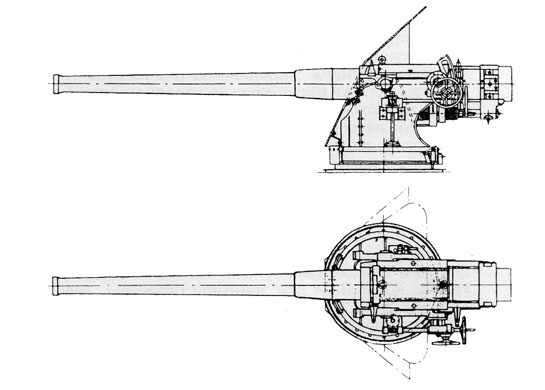
The 120-mm Canet gun, which Mendeleyev planned to use as main armament.
But was it really necessary to protect the machine with so much armour, and to arm it with such a large-calibre gun in 1911? Tanks of WWI were protected much more poorly, and the calibre of tank guns did not exceeded 75 mm. Mendeleyev’s tank is not to be seen as a proper tank, but more a mobile artillery position or big self-propelled gun, primarily used for the destruction of fortifications. In other words, it was thought of as a gigantic Bunker-buster. (This idea would later surface, in the form of the also unpractical but impressive KV-2.) It could not really be used as a tank due to its limited mobility. However, all this at all does not belittle the merits of talented Russian engineer V.D. Mendeleyev. His project was a truly original work which contained a number of truly courageous and innovative features, and some of them has been realized later on.
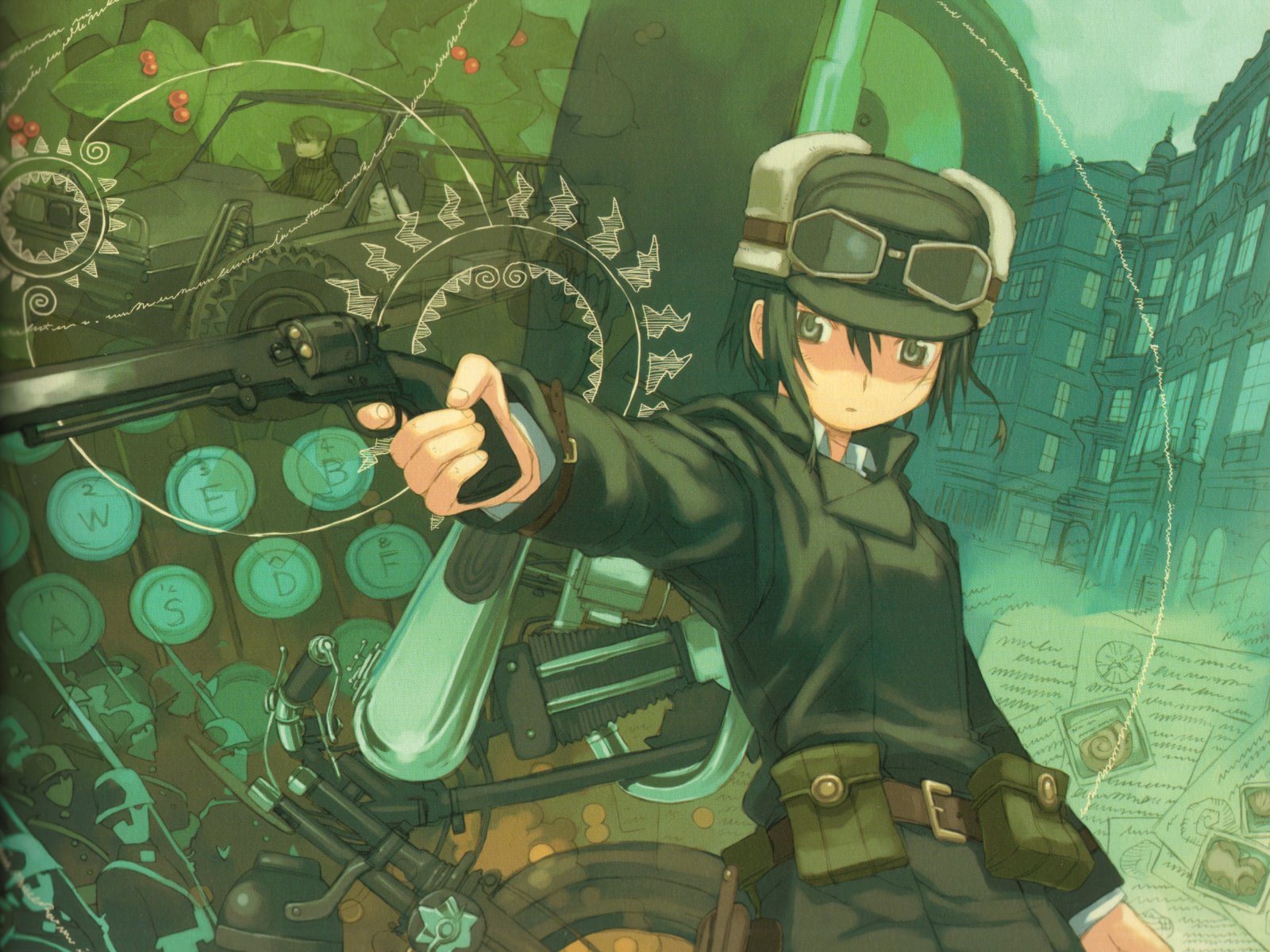
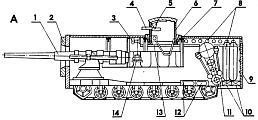
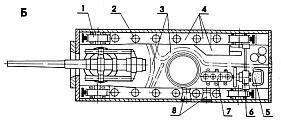
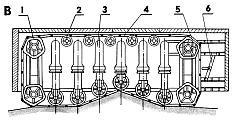

That Tank looks awefull ^^ But great Article!
I agree, and Aleksandr Drobyazko did an admirable job of researching this glorious design. ;^)